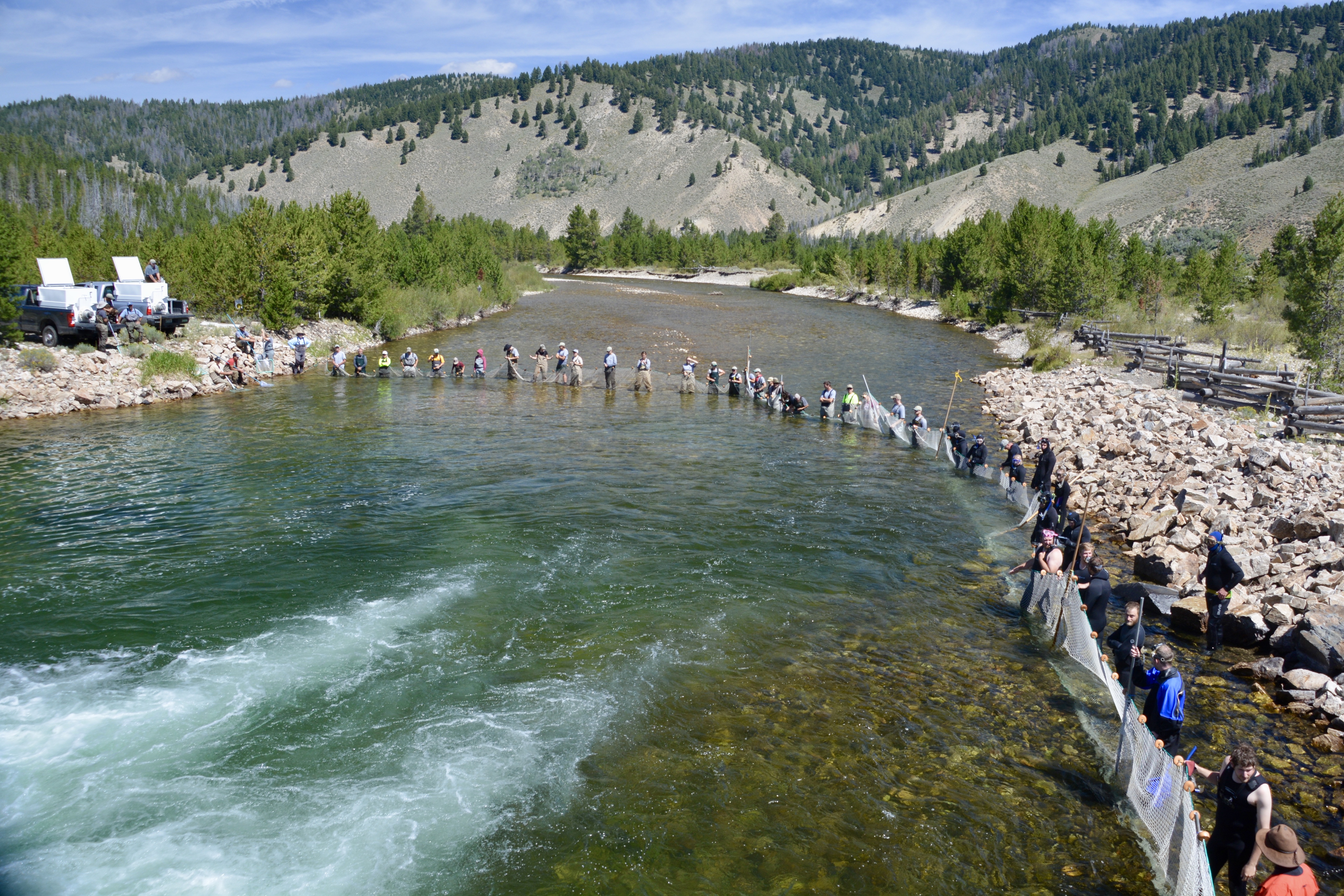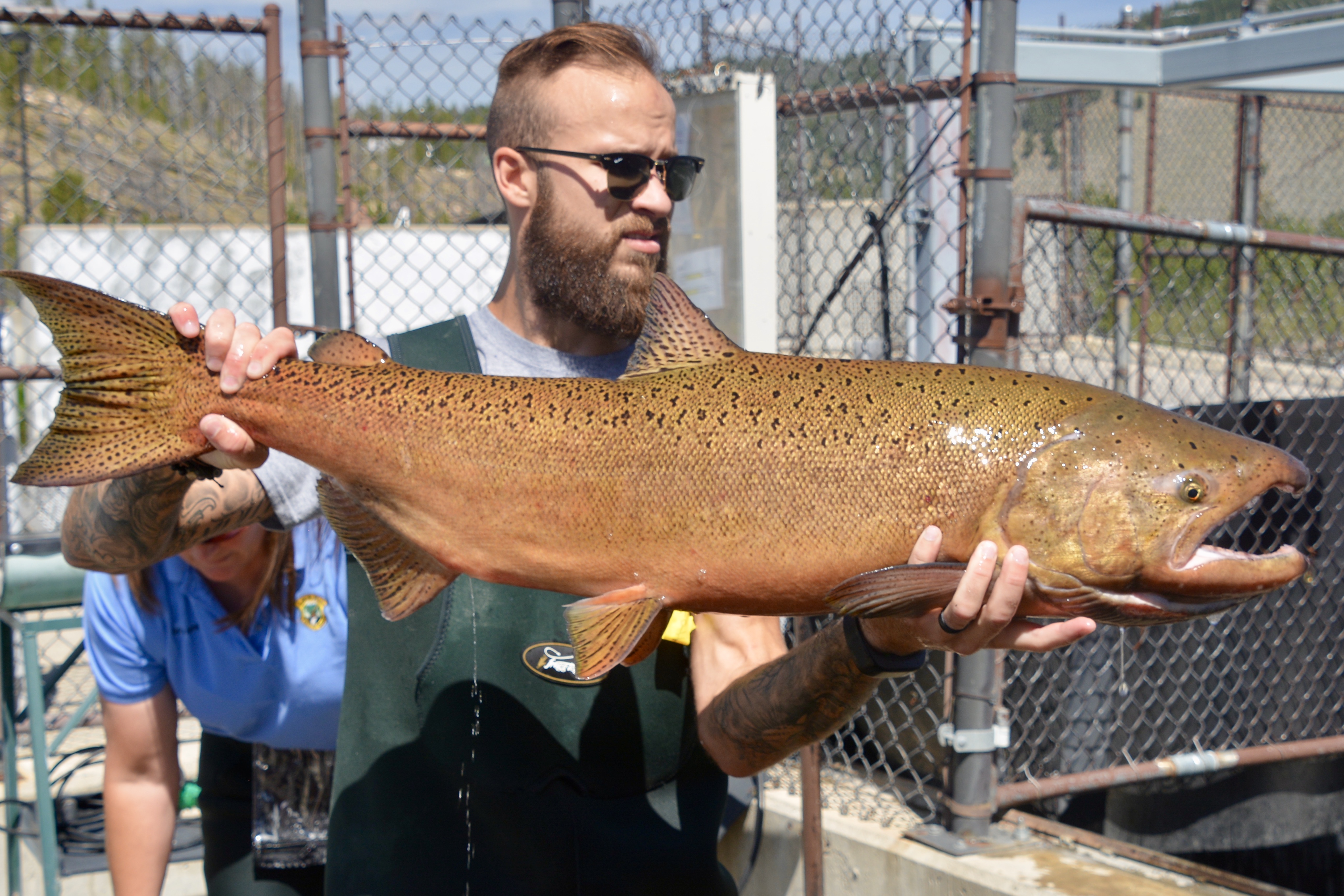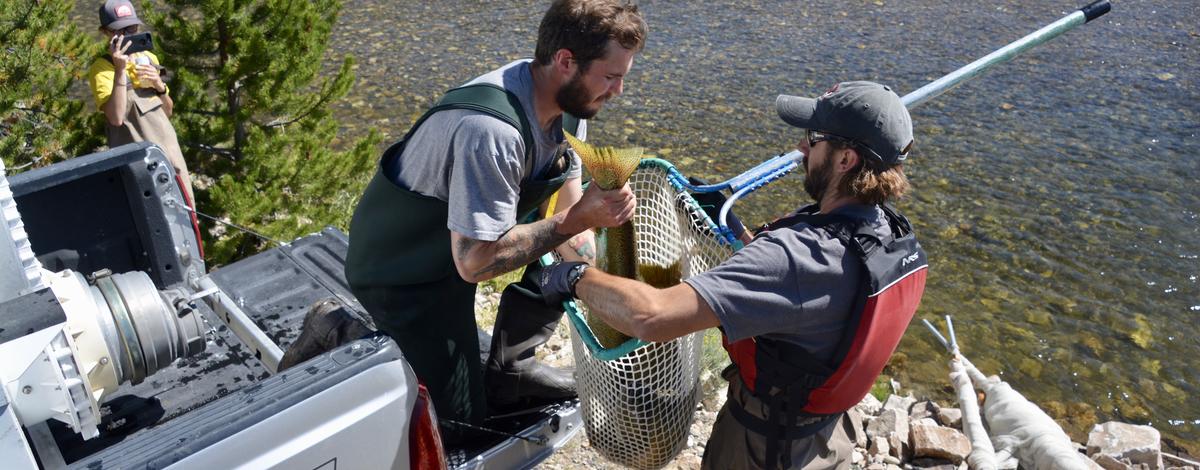In most years, Idaho Fish and Game’s hatchery managers wait patiently for Chinook salmon to return to hatcheries, but this summer, they gave them a helping hand at the Sawtooth Hatchery near Stanley. In August, Fish and Game staff and volunteers held a Chinook salmon roundup in the Salmon River downstream from the hatchery and trapped and transported nearly 250 fish that were holed up downstream and refusing to make the final swim.
A team of more than 60 Fish and Game staff and volunteers strung nets together in the river to form a giant loop. On the upstream side, Fish and Game staff donned wetsuits and slowly constricted the net, ushering 248 Chinook into a makeshift pen where netters scooped them into waiting tanker trucks.

From there, the fish were released into the Sawtooth Hatchery’s raceways, where the hatchery-raised and wild fish were separated. The wild Chinook were released upstream of the hatchery’s weir, and the hatchery-raised fish remained there, destined to produce the next generation of Chinook that will be available for anglers as early as 2021.
Unlike the annual sockeye roundups at Sawtooth, Fish and Game crews don’t usually round up Chinook because enough fish usually return to hatchery’s meet production goals.
But in lean years like 2018 and 2019, too few adult Chinook returned to the hatchery, so every fish became critical. Of the 248 salmon that were rounded up, 122 of them were hatchery-raised adults, and 69 were females. They also captured 87 hatchery-raised jacks, which are males that spent one year in the ocean, after about one and a half years in the hatchery.

Considering only 1,067 adults and jacks returned to the Sawtooth Hatchery prior to the roundup, those 209 additional Chinook increased the hatchery’s return by nearly 20 percent.
“It’s a really substantial number,” said Travis Brown, assistant hatchery manager at Idaho Fish and Game’s Eagle Fish Hatchery. “What this really did is allowed Sawtooth Hatchery to get closer to their target numbers for brood stock.”
While the roundup didn’t quite push the Sawtooth Hatchery to its full brood stock needs, the extra effort gave it a much-needed boost. Prior to the roundup, the Sawtooth Hatchery had about 57 percent of its brood need, but including the females collected during the roundup, the number jumped to 72 percent.
“This roundup far outstripped everyone’s expectations,” said Fish and Game biologist David Venditti. “On average, each female can produce 4,500 eggs. You can do that math and see how many more eggs are going into the hatchery, and for Idaho’s anglers, that means more fish to bend a rod in a couple of years.”
For those without a calculator or acute mental math skills, that’s about 310,000 more eggs that might not have been produced at the Sawtooth Hatchery without the roundup.

Venditti added that the roundup benefits not only Idaho anglers and Idaho Fish and Game’s hatchery program, it also kept more hatchery fish away from wild spawners.
“These fish are made to be in the hatchery, and not spawning in the wild,” Venditti said. “By getting these fish into the hatchery where they belong, we are reducing the hatchery impacts on that natural population as well.”

